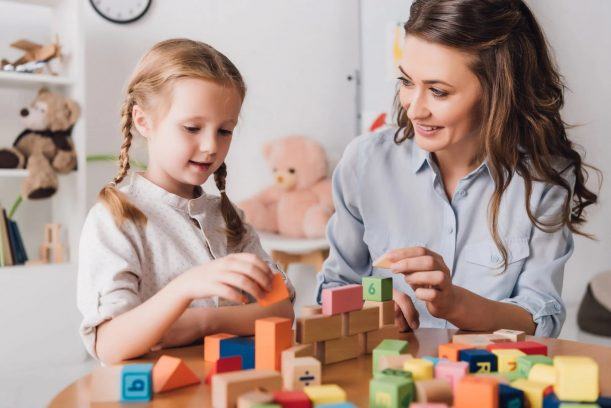If you’ve read some of our other posts that touch on the history of ABA, you know that ABA therapy was first developed as a treatment for autism a little over forty years ago. This means that there is enough history for ABA therapy to have developed a strong and robust research base to support it, but that its researchers and practitioners are still engaged in radical innovation. BCBAs, or Board Certified Behavior Analysts, are required to complete rigorous ongoing continuing education to maintain their active certification. This is partly to ensure that providers out in the field practicing with children with autism and their families stay abreast of new research and methodology. This new research and methodology updates and enhances best practices for longstanding components of ABA, as well as introduces totally new applications for therapy. You can think of present-day ABA therapy as similar to computer coding. While the overall infrastructure and frameworks remain largely similar across time and space, the languages and applications are constantly being updated and replaced by newer and better ones. In this article, we will discuss some of the latest new and exciting developments in ABA. Each of these has a body of research already established to support it, and is being used by more and more practitioners as training is disseminated.
The IISCA
“IISCA” stands for “Interview Informed Synthesized Contingency Analysis.” While the name seems complicated, the intent is just the opposite. The IISCA is a method of treating challenging behaviors and teaching replacement functional behaviors that breaks with the traditional FBA approach. In an IISCA, the family and caregivers are interviewed about the individual with autism’s challenging behaviors across their life with the intent of treating them all – not isolating just one. The IISCA also assumes that there are multiple factors maintaining the set of challenging behaviors, without assuming that one is more powerful than the other. This means that attention and escape could both be contributing to the occurrence of challenging behaviors at the same time – and, that they actually work together. If attention and escape are stronger together, the IISCA method also assumes that treatment will be more effective if they are addressed together – rather than one at a time. For teaching new replacement behaviors, the IISCA method focuses on shaping long-term desired behaviors by starting small and building slowly on things the person with autism can already do easily.
RFT
“RFT” stands for “Relational Frame Theory.” This, too, is a fancy name, but it means something quite simple: humans learn based on the relationships between things. By learning to tell the similarities and differences between things, people learn about their environment and how to act within it. RFT is a behavioral framework with which to assess the way language is learned and how it helps people learn. It is used this way in practice, to increase the effectiveness of social communication and pragmatic language programming for people with autism. It also is said to have provided the underpinnings for ACT, or Acceptance and Commitment Therapy. It also provided the foundation for PEAK, or The Promoting the Emergence of Advanced Knowledge Relational Training System.
Telehealth and Remote Coaching
It used to be that ABA therapy programs could only exist when completely managed by local providers in family homes or clinic centers. This made it difficult for many people who really needed ABA to get access to quality programming, such as those living in rural areas. Today, more and more ABA providers are adopting and rolling out Telehealth and remote services applications. This means that coaching can be provided via video calls. Therapy sessions with a direct therapist can be recorded, and then observed later by a BCBA in a different geographic area, removing the pressure to ensure sessions are scheduled at concurrently available times. Parent training can be done remotely, too. (See more about this here)
Ed-tech and Apps-Based Learning
Perhaps one of the most exciting innovations in ABA therapy today is the infusion of technology and Internet-enabled applications into the therapy and educational space. For example, there are many online learning programs for teaching academic skills like mathematics and reading that now offer accommodations for children with autism, ADHD, dyslexia, and other learning disabilities. There are also a variety of apps now on the market that caters directly to the needs of children with autism and their families. These programs enable tech-based teaching of everything from neighborhood safety skills to picture-based communication methods to following home routines without parent reminders. Many of these programs pursue independent validation through research, while some conduct their research in-house and collect data based on customer satisfaction and outcomes. It used to be that technology-enabled devices for children with autism were prohibitively expensive, hard to program, and weren’t seen or used anywhere else or by the general community – making them impractical for many users. Now, therapeutic technology integrates into existing tablets, smartphones, and computers, decreasing the learning curve for parents and providers as well as learners themselves. There are also a variety of programs and apps that make data collection for ABA programs more simple and more accessible to parents. This increases collaboration and transparency of goals and progress, regardless of whether the program itself is online-based or happening in the physical space with tangible materials. (See more here)
Sources and Additional Resources
Learn more about our approach to parent training here.
Learn more about our services designed for adults with autism here.
Learn more about the IISCA here.
Learn more about RFT here.
Learn more about ACT here.
Learn more about PEAK here.
Learn more about Ed-tech here.



